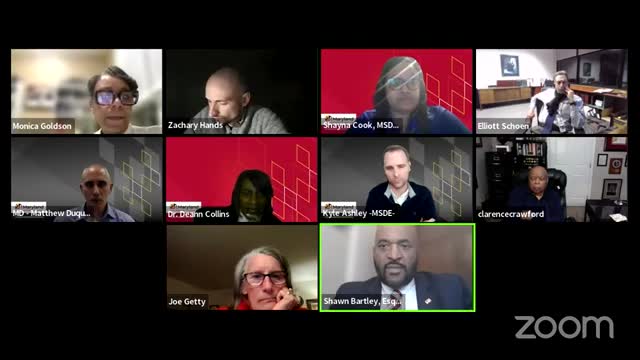Maryland prioritizes multilingual learners in education enrollment for FY 25
February 15, 2024 | Maryland Department of Education, School Boards, Maryland

This article was created by AI summarizing key points discussed. AI makes mistakes, so for full details and context, please refer to the video of the full meeting. Please report any errors so we can fix them. Report an error »

In a recent meeting of the Education Transformation & Accountability Committee held by the Maryland Department of Education, key discussions centered around enrollment priorities for students, particularly focusing on non-native English speakers and children with disabilities. The meeting, which took place on February 15, 2024, highlighted the implications of the Blueprint for Maryland's Future legislation, which aims to address educational equity and access.
One of the primary topics was the prioritization of enrollment for Tier 1 students, which includes families below 300% of the federal poverty level, multilingual learners, and children with disabilities. The committee emphasized that these categories are designed to ensure that the most vulnerable students receive the necessary support and resources. Notably, children experiencing homelessness also fall under this priority tier.
A significant point of contention arose regarding the treatment of non-native English speakers. Some committee members expressed concern that this prioritization might inadvertently disadvantage native English-speaking families who are economically similar to immigrant families. The discussion underscored the need for careful consideration of how these policies are implemented to avoid potential inequities.
Dr. Cook, a committee member, clarified that the classification of multilingual learners is determined through a home language survey at the time of enrollment. This means that a child who is proficient in English, despite speaking another language at home, would not automatically qualify for Tier 1 status. This distinction aims to ensure that resources are allocated to those who genuinely need them.
The meeting also touched on the age classification of children in early education programs. A pie chart presented during the session caused some confusion regarding the inclusion of five-year-olds in programs designated for four-year-olds. Officials explained that this categorization reflects the age of children as of the September 30 enrollment date, noting that many four-year-olds would turn five during the school year.
As the meeting concluded, questions remained about the inclusion of children requiring speech services in the Tier 1 classification. The committee's discussions reflect a broader commitment to refining educational policies to better serve all students while navigating the complexities of socioeconomic and linguistic diversity. The implications of these discussions will likely shape Maryland's educational landscape in the coming years, as the state continues to strive for a more equitable system.
One of the primary topics was the prioritization of enrollment for Tier 1 students, which includes families below 300% of the federal poverty level, multilingual learners, and children with disabilities. The committee emphasized that these categories are designed to ensure that the most vulnerable students receive the necessary support and resources. Notably, children experiencing homelessness also fall under this priority tier.
A significant point of contention arose regarding the treatment of non-native English speakers. Some committee members expressed concern that this prioritization might inadvertently disadvantage native English-speaking families who are economically similar to immigrant families. The discussion underscored the need for careful consideration of how these policies are implemented to avoid potential inequities.
Dr. Cook, a committee member, clarified that the classification of multilingual learners is determined through a home language survey at the time of enrollment. This means that a child who is proficient in English, despite speaking another language at home, would not automatically qualify for Tier 1 status. This distinction aims to ensure that resources are allocated to those who genuinely need them.
The meeting also touched on the age classification of children in early education programs. A pie chart presented during the session caused some confusion regarding the inclusion of five-year-olds in programs designated for four-year-olds. Officials explained that this categorization reflects the age of children as of the September 30 enrollment date, noting that many four-year-olds would turn five during the school year.
As the meeting concluded, questions remained about the inclusion of children requiring speech services in the Tier 1 classification. The committee's discussions reflect a broader commitment to refining educational policies to better serve all students while navigating the complexities of socioeconomic and linguistic diversity. The implications of these discussions will likely shape Maryland's educational landscape in the coming years, as the state continues to strive for a more equitable system.
View full meeting
This article is based on a recent meeting—watch the full video and explore the complete transcript for deeper insights into the discussion.
View full meeting
